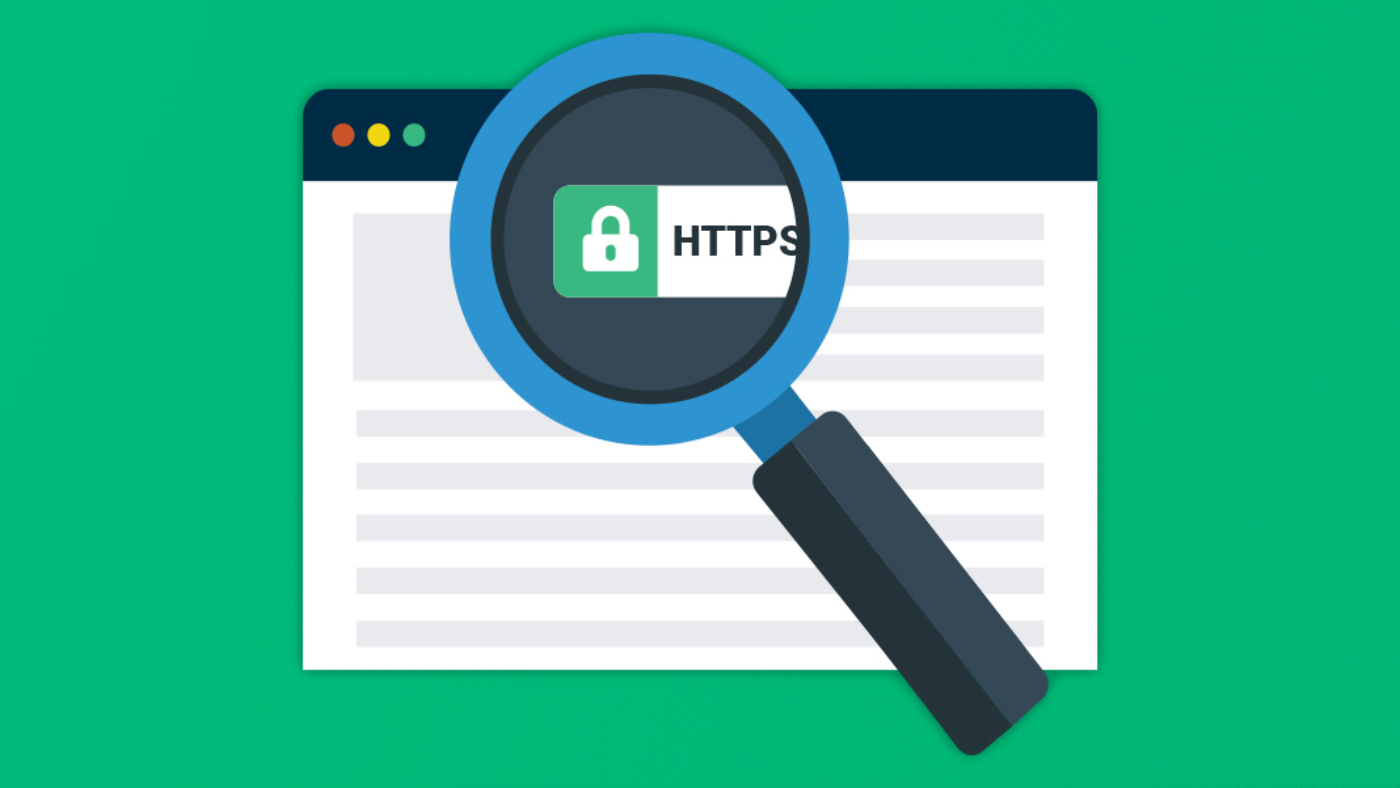Once upon a time (1989 to be exact), a technology was created that would go on to change the world in ways we could never have predicted. The World Wide Web offered us limitless possibilities for connection, commerce, and communication as it suddenly shrunk the world as we knew it.
The engine running this game-changing innovation was the Hypertext Transfer Protocol (HTTP), used to receive and transfer information over the internet. With HTTP, we could now communicate and collaborate with people around the world, start a business from our homes, and explore places we never knew existed.
For a moment, it looked as though this new creation would make our lives easier and more fulfilling as we became more connected. But there was a problem.
While HTTP was fast and easy, it was also unsecure. It didn’t take long for criminals to learn how to exploit this little glitch and ruin the party for the rest of us. As the internet became a major part of our lives and the global economy, cyber attacks increased, birthing an entire industry of cyber theft that flourished for decades, eventually costing businesses trillions per year.
It was clear that we needed a more secure protocol, something that would ease our fears when submitting personal information over the internet. Enter HTTPS, the more secure brother of HTTP and the reigning champ of internet security protocols.
What is HTTPS?
HyperText Transfer Protocol Secure (HTTPS) serves as the guardian of information traveling from your server to a visitor’s browser. It blocks potential attacks by encrypting data, so attackers only see random characters in place of sensitive information. Due to its enhanced levels of security, HTTPS has quickly replaced HTTP as the standard protocol for most modern websites.
HTTPS is especially vital for ecommerce, where customers must enter financial information most commonly sought out by hackers. When a visitor makes a purchase, the private payment data is transferred from their browser to the ecommerce site. It’s during this transfer when users’ personal information is most vulnerable to attackers. HTTPS adds the critical layer of encryption to prevent anyone from gaining access to this information while it’s being transferred.
TLS Certificates and HTTPS
HTTPS works in partnership with a Transfer Layer Security (TLS) certificate, which actually encrypts the data. Formerly known as Secure Socket Layer (SSL), TLS certificates are issued and authenticated by vetted businesses known as Certificate Authorities (CA).
Authenticated sites typically feature a padlock icon on most browser address bars. When visitors click on the lock, they can learn when the certificate was issued, who it’s issued to, and what website(s) the certificate is valid for. This provides an additional layer of transparency. This serves as proof that the website uses the most updated methods of protecting visitor information.
You can either purchase a TLS certificate or use a free version offered through many hosting or CDN plans. However, free certificates typically only offer Domain Validation (DV), which means the certificate won’t feature an Issued To field or any business verification.
While DV can be fine for blogs and sites that don’t collect much sensitive personal information, having an Issued To field is essential for ecommerce sites. In that case, you’re better off shelling out $100/year for a TLS certificate that offers either Organizational Validation (OV) or Extended Validation (EV). While the two types are similar, EV provides the most robust protection and the deepest business verification services.
Why ALL Website Owners Should Care About HTTPS
You may be reading this and wondering how HTTPS applies to your website. If you’re not processing payments or collecting personal information, then you probably don’t need HTTPS, right? Not quite.
The truth is that the future of the internet will run on HTTPS, if not an even more secure protocol. We know this because the transition has already begun, with about 95% of all sites now using HTTPS and the number growing each year. With that in mind, there’s no reason to get left behind by leaving your site vulnerable with HTTP.
Switching to HTTPS offers your site a bundle of benefits, some more obvious than others. Here are just a few:
Search Engine Optimization (SEO)
Did you ever notice the scary warning that pops up when you try to access an unsecured website? There’s a reason why browsers aren’t keen on unsecured sites. Search engines seek to provide the best websites for their users, meaning sites that feature good design, a smooth user experience, and protection of user data.
Employing HTTPS signals to search engines that you have taken the appropriate steps to secure your user data. This can result in a boost from search engines, especially Google, who announced in 2014 that they would now incorporate HTTPS into their ranking factors. While it’s not a major factor, it will give you the edge over competing businesses who don’t secure their sites with HTTPS.
Compatibility
As previously stated, the future of the web relies on HTTPS, both for security and the technological leaps that come from this additional security. Going forward, sites not optimized for HTTPS will experience difficulties to incorporate innovative, web-based platforms. If you’re not using HTTPS, it’s likely you’ll be left in the dust as the internet evolves.
For one, HTTPS is required to run Accelerated Mobile Pages (AMP), which have increased in popularity since the launch of Google’s AMP project in 2016. Accelerated Mobile Pages are essentially bare-bones, HTML-only versions of an existing webpage. The stripped-down format results in faster load times, with one study finding a 77% reduction in server requests, a major factor for load speeds.
Progressive Web Applications (PWA) are another emerging web format requiring HTTPS. Like AMPs, Progressive Web Applications aim to deliver the same capabilities and user-experience of an app without the user having to download anything. They offer improved performance, faster load times, less user data use, and have proven to substantially increase conversions. Pinterest discovered a 60% increase in engagement, along with a 50% increase in ad click-through rates after launching their PWA.
As AMP and PWA become more common in the coming years, it’s important to get ahead of the times and optimize your site for these emerging formats. Regardless of whether you decide to use them or not, you’ll have the HTTPS infrastructure in place to quickly make it happen.
Reputation
Perhaps most important of all, adopting HTTPS helps establish a reputation of trust among your visitors, especially compared to unsecured sites. Nothing sends a visitor scrambling for the exits quite like the red X of a “Not Secure” warning. And with most modern browsers, such as Chrome and Firefox, cautioning against unsecured sites, you don’t want to be branded with a scarlet letter when visitors meet you for the first time.
HTTPS protects the integrity of your website by protecting your users’ privacy and security. Think of a TLS certificate like a restaurant’s food inspection. Restaurants post these certificates publicly because it shows that the establishment went through the proper channels to attain legitimacy. In the same way, a TLS certificate shows that you’re a legitimate business worth trusting.
How to Make the Switch
Making the move to HTTPS can be a complicated process if you plan to go it alone. You’ll first want to reach out to your hosting company to see if they offer an easy HTTPS option (or find a hosting company that does). For example, Kinsta and WPX Hosting both offer one-click options for migrating to HTTPS that take less than a minute to complete.
If your provider doesn’t offer these options, we would recommend consulting a professional if you lack the technical expertise to pull off such a complex task. But if you want to push forward, you can visit a site like Let’s Encrypt or SSL2Buy, which will help you obtain a TLS certificate. This guide from Kinsta also provides step-by-step directions for a complete HTTP to HTTPS migration.
HTTPS – The Protocol of Trust
Keeping up on the latest security protocols like HTTPS is an important part of developing a trusting relationship with your users. Seeing that lock box in the address bar gives your visitors comfort and influences whether they will trust your business enough to take it to the next step.
Just as a TLS certificate gives you a badge of honor to wear proudly, the DigitalTrust Trustmark provides clear, visual indication that a third party has deemed your site trustworthy. This lets your future visitors know they can browse confidently on your site because you take the issue of digital trust seriously.
Before you can build a following and increase sales, you have to build trust with your users. But trust is a give and take. If you put in the time and effort to gain user trust, they will give it back in spades. By keeping up on security protocols like HTTPS, you can start your journey to digital trust on the right foot.





